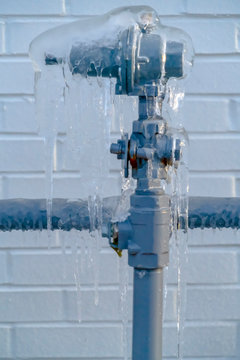Protect Against Frozen Pipes in Cold Weather: Pro Tips
Protect Against Frozen Pipes in Cold Weather: Pro Tips
Blog Article
This article which follows in relation to How To Avoid Freezing Pipes is amazingly compelling. Don't bypass it.

Cold weather can ruin your plumbing, especially by freezing pipelines. Right here's just how to prevent it from occurring and what to do if it does.
Intro
As temperatures decrease, the danger of icy pipes increases, possibly bring about costly repair work and water damages. Recognizing how to prevent frozen pipelines is important for property owners in chilly climates.
Understanding Frozen Pipes
What causes pipes to freeze?
Pipes ice up when revealed to temperature levels listed below 32 ° F (0 ° C) for prolonged durations. As water inside the pipes freezes, it expands, taxing the pipeline walls and potentially triggering them to rupture.
Risks and problems
Icy pipes can lead to water disturbances, residential property damage, and expensive fixings. Burst pipelines can flood homes and create substantial structural damages.
Signs of Frozen Water Lines
Recognizing icy pipelines early can stop them from breaking.
Just how to recognize icy pipelines
Search for reduced water flow from faucets, uncommon smells or sounds from pipes, and visible frost on revealed pipelines.
Prevention Tips
Insulating vulnerable pipelines
Cover pipes in insulation sleeves or make use of warmth tape to safeguard them from freezing temperatures. Concentrate on pipes in unheated or exterior locations of the home.
Home heating techniques
Maintain interior rooms appropriately heated up, especially locations with pipes. Open closet doors to enable cozy air to distribute around pipelines under sinks.
Safeguarding Outdoor Pipes
Garden tubes and outside taps
Disconnect and drain yard pipes prior to winter season. Mount frost-proof spigots or cover outside faucets with protected caps.
What to Do If Your Pipelines Freeze
Immediate activities to take
If you presume icy pipelines, maintain taps open to ease pressure as the ice melts. Use a hairdryer or towels soaked in warm water to thaw pipelines gradually.
Long-Term Solutions
Structural changes
Take into consideration rerouting pipelines away from exterior wall surfaces or unheated areas. Add added insulation to attic rooms, basements, and crawl spaces.
Updating insulation
Purchase premium insulation for pipes, attic rooms, and walls. Correct insulation assists maintain constant temperatures and minimizes the risk of icy pipes.
Final thought
Preventing icy pipelines needs proactive measures and fast reactions. By comprehending the causes, indicators, and preventive measures, homeowners can secure their plumbing throughout cold weather.
5 Ways to Prevent Frozen Pipes
Drain Outdoor Faucets and Disconnect Hoses
First, close the shut-off valve that controls the flow of water in the pipe to your outdoor faucet. Then, head outside to disconnect and drain your hose and open the outdoor faucet to allow the water to completely drain out of the line. Turn off the faucet when done. Finally, head back to the shut-off valve and drain the remaining water inside the pipe into a bucket or container. Additionally, if you have a home irrigation system, you should consider hiring an expert to clear the system of water each year.
Insulate Pipes
One of the best and most cost-effective methods for preventing frozen water pipes is to wrap your pipes with insulation. This is especially important for areas in your home that aren’t exposed to heat, such as an attic. We suggest using foam sleeves, which can typically be found at your local hardware store.
Keep Heat Running at 65
Your pipes are located inside your walls, and the temperature there is much colder than the rest of the house. To prevent your pipes from freezing, The Insurance Information Institute suggests that you keep your home heated to at least 65 degrees, even when traveling. You may want to invest in smart devices that can keep an eye on the temperature in your home while you’re away.
Leave Water Dripping
Moving water — even a small trickle — can prevent ice from forming inside your pipes. When freezing temps are imminent, start a drip of water from all faucets that serve exposed pipes. Leaving a few faucets running will also help relieve pressure inside the pipes and help prevent a rupture if the water inside freezes.
Open Cupboard Doors
Warm your kitchen and bathroom pipes by opening cupboards and vanities. You should also leave your interior doors ajar to help warm air circulate evenly throughout your home.

We had been made aware of that editorial about How to prepare your home plumbing for winter weather from a buddy on our other web page. Sharing is caring. Who knows, you might be helping someone out. We love reading our article about How to Prevent Your Pipes From Freezing.
Schedule And Pricing Report this page